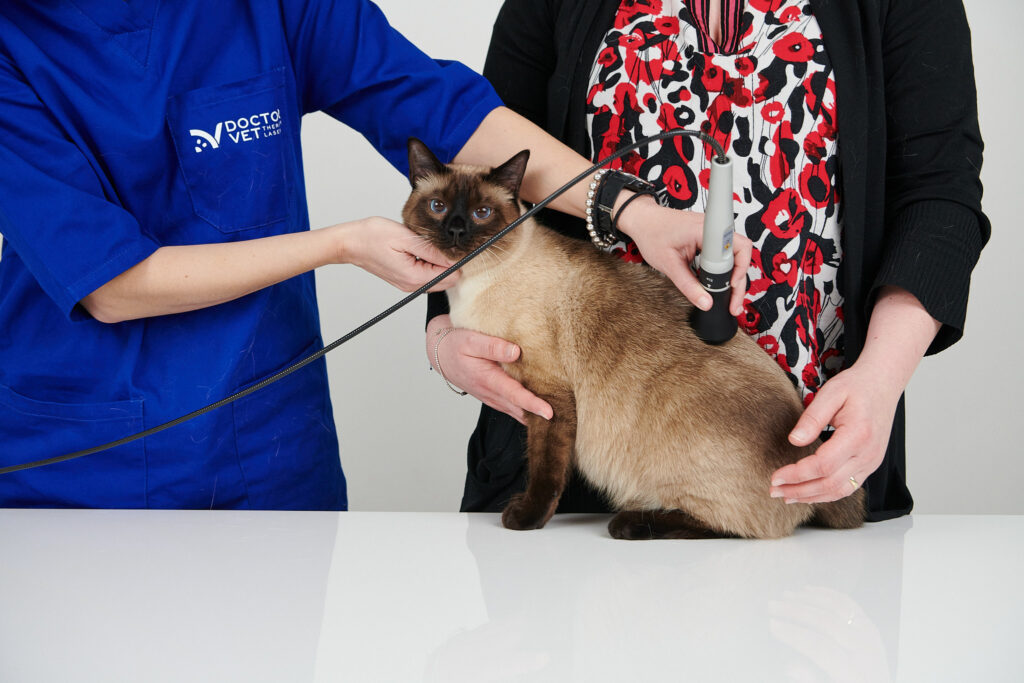Besides being considered as an emerging medical technique and although more studies are needed on the unification of parameters and application techniques, many scientific articles have been written on laser therapy that show its benefits for various pathologies.
One of those articles, by Morgan et al, is entitled “The Effect of Phototherapy on Neutrophils” and was published by the International Immunopharmacology journal in 2009. The authors studied the immunomodulatory effects presented by laser therapy, especially how it acts on neutrophils.
Increasing evidence exists of the immunomodulatory effect of laser therapy. These immunomodulatory effects include the antimicrobial effect shown by said therapy. The various treatments that use laser include photodynamic therapy, which is characterised by the use of certain wavelengths in combination with photosensitising drugs. Studies have been conducted on this in various fields, such as dentistry, dermatology and infections, including Helicobacter pylori. The effects are considered promising given that it is a non-invasive and non-toxic treatment.
The role of phototherapy on neutrophils is of great interest in a large number of pathologies, such as dermatology, auto-immune diseases and infections.
The study includes a bibliographic review of controlled studies and studies conducted under laboratory conditions. Clinical cases, uncontrolled studies and retrospective studies are excluded.

A total of 22 articles were found that evaluate the effects of laser on neutrophils. Of those articles, four include He-Ne and LLLT laser; seven include GA-Al-As, Ga-As and In-Ga-Al-P laser; and 11 articles include photodynamic therapy.
The first article demonstrating the benefits of laser therapy on neutrophils was published in 1989 by Dr. Karu et al. The same results were obtained in 2001 with the article published by Duan et al, showing the effect of laser therapy on neutrophils and the role played by tyrosine kinase, protein kinase C and phospholipase C. The role played by laser therapy on the apoptosis of polymorphonuclear cells was also demonstrated by Hemvani et al in 2005.
Another study (Abdel et al, 2007) demonstrated the role played by this therapy on nitric oxide and nitric oxide synthase in healthy patients and patients with Duchenne muscular dystrophy, observing a 207% increase by the former in healthy patients and 183% in patients with Duchenne muscular dystrophy. The latter was increased by 48% and 142%, respectively.
A total of seven studies are included. These studies include human neutrophils from smoker and non-smoker patients (Fujimaki et al, 2003), in rat lung (Aimbire et al, 2005), pleura in mice (Lopes-Martins et al, 2005), in mouse peritonitis (Correa et al, 2007), neutrophils from mouse lung (Aimbire et al, 2008), in mouse muscle cells (Barbosa et al, 2008) and in neutrophils in rat lung (Aimbire et al, 2008).
All of them observed a reduction in neutrophils in various pathologies, including reduced migration of leukocytes in the studies by Lopes-Martins, with better results depending on the dose (similar to the study conducted by Correa).
The two studies conducted by Aimbire not only showed reduced infiltration of neutrophils but also of interleukins related to inflammation, such as IL-1β, as well as RNAm of Bcl-XL (set of proteins associated with cellular apoptosis).
A total of 11 articles are included on photodynamic therapy in neutrophils, which include various mouse tumours (Krosl et al, 1995; Cecic et al, 2001; Cecic et al, 2002; Cecic et al, 2006; Cecic et al, 2006; Sun et al, 2002; Gollnick et al, 2003; Kousis et al, 2007), rat tumours (de Vree et al, 1996; de Vree et al, 1997) and human tumours (Kobayashi et al, 2004).
The study by Krosl et al showed an increase in neutrophils that was 200 times greater. Other articles, such as the one by Cecic et al (2002), also show an increase in various growth factors.
The articles show neutrophilia and an increase in anti-tumour immunity, demonstrating a reduction in the tumour subject to study.
Seeing is believing!
Book a demo now to learn how DoctorVet works!
In the study, the authors conclude that clinical studies on the effect of laser on neutrophils are essential for explaining therapeutic options in medicine. They conclude that laser therapy does indeed have an effect on neutrophils. These effects could have significant impacts on patient treatment, especially in chronic and relapsing pathologies.
Hence, this article conducts a meticulous bibliographic review of the effects of laser therapy on neutrophils. Despite being studied at a laboratory level, its effects are shown on the immune system by understanding what occurs at a cellular level and the role played by laser therapy on the immune system.

Via dell’Impresa, 1
36040 Brendola (VI)
VAT 02558810244
C.R. VI 240226
© Copyright 2016-2021 LAMBDA S.p.A. | Privacy Policy